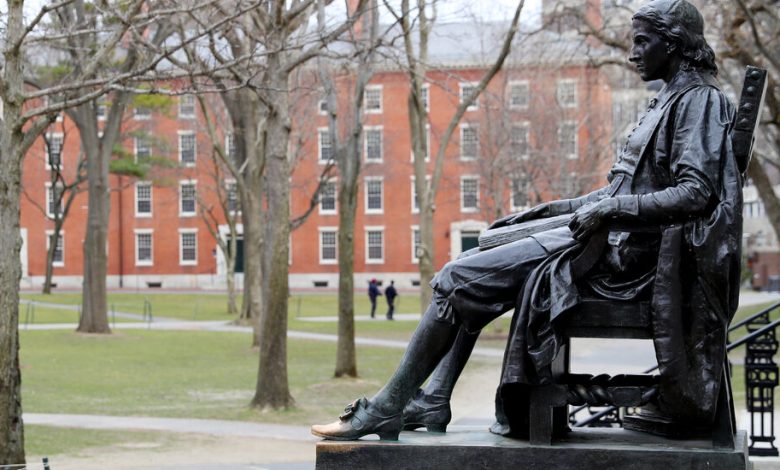The Real College Admissions Scandal

YAMHILL, Ore. — Before I make an argument about affirmative action, let me tell you how I was a beneficiary of it.
I wasn’t a student of color, but I grew up on a farm and attended a small, rural high school where there wasn’t much math and nobody had ever applied to an Ivy League college. My grades and scores were strong but not extraordinary.
But I did have one thing going for me. Elite colleges were looking for farm kids from low-income areas to provide diversity. So a school that I had never visited, Harvard, took an enormous risk and accepted me, and I became a token country bumpkin to round out a class of polished overachievers. In time, Harvard gave me a wonderful education, transformed my life and set me on a path to becoming a columnist — which is why you’re stuck reading this. Yes, indeed: Providing paths to a better education can be life-changing.
So how do we do that for others? I wish the Supreme Court had ruled differently on affirmative action for race, but unfortunately it blocked that path for diversity. My fear is that we will all throw up our hands and sit around blaming the court, rather than actually working to overhaul a disgracefully unequal education system.
In fact, there are still ways to broaden educational opportunity. But they may require us liberals to look in the mirror and acknowledge the role of our own institutions in perpetuating inequality.
Elite universities are bastions of left-of-center ideas, yet advantage four groups that are already privileged: children of graduates, recruited athletes for sports like rowing and fencing, children of faculty members and children of large donors.
A new study by Professor Raj Chetty and his colleagues at Harvard’s Opportunity Insights group found that partly because of such preferences, top colleges in effect offer affirmative action to the wealthy. For example, children from the top 0.1 percent of households in income are 2.2 times as likely to be admitted as kids with the same scores from less wealthy households.
In fact, this understates the injustice, for the less advantaged children achieve the same scores without $1,000-an-hour SAT coaches.
If you’re rich and your child sails, maybe he can be recruited by an Ivy League sailing team. Or perhaps after enough lessons, she can impress admissions officers with her French horn skills. Or write a moving essay about volunteering in Kenya and then raising $50,000 for children there — not mentioning that the sum was raised by asking dad for a check.
All told, a 2017 study found that 38 colleges had more students from the top 1 percent than from the bottom 60 percent. Adding to the pressure on legacy admissions, the Education Department has opened a civil rights investigation into the practice at Harvard.
(Conflict alert: I was a member of the Harvard Board of Overseers and my wife, Sheryl WuDunn, is currently a member and previously served on the Princeton and Cornell boards; our three children also attended Harvard.)
So what can be done to expand opportunity, aside from ending preferences for the privileged? Top colleges have taken some steps, including broadening recruitment and reducing costs for families of modest means. Bravo to Wesleyan University for this month becoming one of the latest to abolish legacy preferences, joining Amherst, Johns Hopkins and a few others.
Class-based and geographically-based affirmative action is still allowed, and it may be possible to boost kids from low-income or low-education families to compensate in part for the Supreme Court ruling. A 2012 study found that seven out of 10 public universities studied were able to maintain or increase the share of Black and Hispanic students with race-neutral strategies targeting socioeconomic inequality.
More broadly, though, too much of the discussion about equity is focused narrowly on affirmative action at competitive universities.
Top universities are important because they disproportionately propel graduates into the Senate, the Supreme Court and other top jobs, but never forget that it is humble community colleges that transform lives at a far greater scale. While Harvard changed my trajectory, I had childhood friends who would have benefited even more if they could only have attended a career academy or community college and learned a marketable job skill; instead they were lost to factory layoffs, addiction and overdoses.
According to a very rough estimate by Professor Sean Reardon at Stanford University, race-based affirmative action has benefited only about 10,000 to 15,000 students each year who might otherwise not have been admitted at their elite colleges — whereas more than three million Black and Hispanic students were enrolled in community colleges in 2020-21. Like public universities, community colleges are some of America’s greatest engines of opportunity.
Joseph Nye, an eminent professor emeritus at Harvard, told me that he had been thinking of donating part of his I.R.A. to Harvard when a friend suggested a community college instead. Nye investigated and ended up donating $100,000 to help students attend Bunker Hill Community College in Boston. That will help an enormous number of young adults.
In the broadest sense, the real college admissions scandal isn’t even the extra benefit given to privileged kids; it’s that so much talent is never nurtured and a majority of young people don’t get a chance to graduate from college at all. If we’re serious about promoting equality, we can champion early childhood programs: To get more kids in a university, invest in pre-K. We can take on local funding of education, which leads to poor children attending poor schools. We can fight to raise high school graduation rates. As I’ve written, we can learn from states that have gained ground — including Mississippi, once mocked as the nation’s educational caboose and now a place where fourth-graders in poverty are tied for best in the nation in reading.
It’s easy enough for us liberals to sit around carping about the Supreme Court. Sure, let’s do that — for five minutes, and then let’s focus on all else that we can still do to boost opportunity and diversity.
The Times is committed to publishing a diversity of letters to the editor. We’d like to hear what you think about this or any of our articles. Here are some tips. And here’s our email: [email protected].




